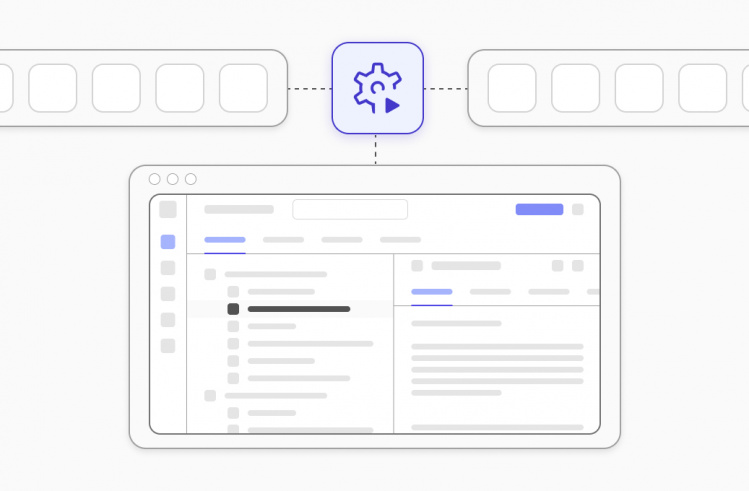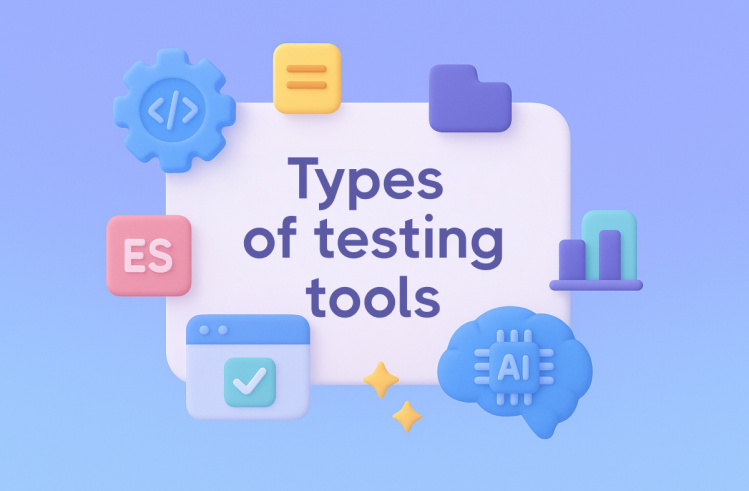Times have changed and the mobile market has gained significant traction. Today’s users of mobile apps expect instant and seamless interactions as well as demand more features and better performance. That’s why providing a superior app experience across iOs and Android devices that starts from the moment users open an application for the first time is critical. As the mobile space is incredibly fragmented, the need for quality mobile app testing has become a major challenge.
There are thousands of things to test between devices, OSs and network connections. With mobile test automation in place, you can quickly scale your tests, speed up test coverage and accelerate mobile applications delivery. Keep reading our article to discover why automated mobile app testing should be a priority when planning your testing strategy.
What is mobile app automation testing?
As the name suggests, mobile app testing automation refers to the process of carrying out automation testing on mobile devices by leveraging specialized mobile testing tools. Thanks to these mobile testing tools, testing teams can validate functionality, usability or performance to make sure the app works as seamlessly on Android and iOS platforms as expected before being released to app stores. When it comes to automated mobile app testing, you should take into account the type of app you are going to test. Let’s take a look at the mobile app types below
4 Types of Mobile Apps
There are four types of mobile apps that companies develop today. And your mobile testing approach might differ taking into account the type of app you’re building.
- Native (iOS/Android): designed for specific mobile platforms, this type can be installed from dedicated application stores (App Store or Google Play). If an app is built for Apple iOS or Windows platforms, then it will not work on Android.
- Hybrid: created to work on more than one operating system or platform, this type of app looks like web pages wrapped in a mobile app using WebView.
- Mobile Web apps: this type of app can be accessed from the desktop browser or mobile device and functions according to the device you are viewing them on.
- Progressive Web Apps (PWAs): built to work on any web browser on both desktop and mobile devices, this type of app functions like native mobile apps.
Why do you need mobile app testing?
It’s no secret that people use mobile devices numerous times a day. Whether it is for work or just for entertainment, getting them engaged with your mobile app enough to stick around long-term is a must. Unfortunately, many companies fail in their efforts to create a mobile app that becomes a reliable revenue stream. According to statistics, only 1% of consumer mobile apps succeed while 99% of them fail. That’s why apps need to be tested across various mobile devices and operating systems. This helps check their compatibility, usability, performance and consistency.
When using automated mobile app testing, testing teams can automate repetitive tasks and quickly find out errors, defects, and vulnerabilities. Additionally, it boosts productivity and simplifies the testing activities by running tests on multiple devices in parallel and reusing tests. This results in high test coverage and better ROI.
Challenges QA teams might face while testing mobile applications
According to a recent report, 65% of responding companies say that they do not have the right mobile testing tools to test mobile apps, 18% of them lack time and 52% do not have real devices to perform mobile testing. Below you can discover other real-time challenges faced by companies and ther teams.
#1: Device fragmentation
The vast number of active devices running an Android and iOs app significantly increases every year. This means that testing teams should resolve compatibility issues and make sure an app can be deployed across different OSs (Android/iOS/Windows/ etc.) as well as across various versions of the same operating system.
#2: Numerous Mobile Devices
According to Statista, the current number of smartphone users in 2023 is 6.92 billion globally. The numbers mean that 86.29% of the world’s population has a smartphone. What’s more, it’s estimated that the number of users will increase over the next 5 years. You might wonder how many devices are being used in the world. Thus, this creates trouble for the testing teams to ensure an app runs as expected on most devices.
#3: Device-specific features
It’s no secret that any new Android and iOs devices are equipped with different features and specifications. That’s why creating and testing the same functionality available on all the devices pose a real challenge to development and QA teams.
#4: Browser Fragmentation
Your mobile Android and iOs applications can operate on a mobile browser. As 80% of users use Google Chrome and Mozilla Firefox, other browsers should be taken into account to eliminate issues. That’s why it’s essential to test your web app on all the different device sizes and resolutions that your target audience is going to use.
#5: Security concerns
According to a mobile security report, 40% of the world’s devices are at risk of cyberattacks. The rising mobile app security risks have become a challenge for many companies. Preventing data breaches and protecting sensitive customer data is a must for today’s digital business. With the help of thorough testing, you can secure your mobile apps from the biggest security threats and ensure that any sensitive data is always encrypted and protected.
Building a high-quality mobile app is the end goal for any company. When testing, QA teams encounter a set of challenges every day. Only by addressing them immediately and opting for the right mobile application testing types can QA engineers reduce the impact they have on your end product.
Key Types of Mobile application testing
These days, QA and development teams should apply the following well-known testing types and go straight to them. Here we are going to overview key types of mobile testing the teams should conduct before an app will be released in the Android and iOs application store. Let’s dive into the details below!
- Functional Testing: has a focus on verifying every function of the mobile app to make sure an app works as precisely as required. App functionality, including installation, updates, sign-ups and login, device-specific functions, and push notifications should be fully tested.
- Interrupt Testing: means carrying out different activities such as making a call, sending a message, receiving notifications, and switching between the apps. etc. These forms of interruptions help find out whether an app can handle them without failures.
- Speed Testing: taking into account that mobiles generate 59.16% of worldwide website traffic, checking how fast websites load on mobile devices is important.
- Localization Testing: allows testing teams to test features based on the app’s geographical location and make sure its behavior is suitable for specific locations.
- Memory Leak Testing: enables teams to check the application performance on devices with different phone memory and optimize it for each of the user’s mobile phones.
- Performance Testing: teams verify how an application performs under various conditions to ensure it functions correctly. They usually check device performance (installation and log-in time, battery consumption, etc.), API/Server performance (speed of ‘communication’ between back-end and front-end), network performance (delays, errors, etc.) and recovery capabilities.
- Usability Testing: helps teams to check whether a mobile app meets user needs, including visually appealing design, great intuitiveness and quick response time or not.
- Security Testing: allows teams to uncover any vulnerabilities of the system and determine that the app data are protected from possible cyber attacks.
Top mobile testing tools for automation
There is a great number of mobile automation testing tools for the development and testing teams to apply to check various app features and functionality. When choosing, you should consider the company’s capabilities and testing goals. Here we are going to briefly overview some of the best mobile testing tools:
Appium
As an open-source test automation framework, Appium is applied to test mobile native apps, hybrid mobile apps and mobile web solutions.
Key features:
- It supports Windows together with major mobile platforms such as iOS and Android.
- It provides automation for both web applications and mobile applications.
Espresso
With this Android-specific test automation framework, teams can write automation test cases for user interface (UI) testing of Android and iOS apps in a stable testing environment.
Key features:
- It allows testers to synchronize UI elements and test actions.
- It compiles automated UI tests into a separate APK.
- It requires minimal programming skills to automate tests.
Apptim
As an open-source test automation tool, it helps teams detect critical bugs faster and find out new performance issues in mobile apps.
Key features:
- It allows testers to test apps on real devices and generate detailed reports.
It doesn’t require great programming skills to get started.
It offers integration options with Jira tool for bug tracking.
Charles Proxy
Written in Java, this tool is used as a web debugging tool for testing mobile applications. It offers a quick start, provides a clear UI and supports all platforms.
Key features:
- It is equipped with a full set of debugging features.
- It allows testing teams to carry out and speed up debugging activities on all OS devices.
XCUITest
Pre-built with Xcode, it is applied as an Apple-specific test automation framework to help development and teams automate UI testing of iOS applications. They can create and run UI tests, unit tests, and performance tests
Key features:
- It generates fast, reliable, and non-flaky tests.
- It supports Continuous Integration (CI).
- It offers recording options.
BrowserStack
Applied as an all-in-one solution testing tool, it provides thorough testing for native and mobile web applications and offers easy and straightforward deployment.
Key features:
- It allows testing teams to test over 3000 real devices and browsers.
- It provides great integration options.It offers high performance and speed while testing.
Ranorex
Applied as a GUI test automation framework, it provides mobile, web, and desktop testing of mobile solutions. With a user-friendly UI and detailed instructions, testers can create, record and analyze a set of their automated test cases with ease.
Key features:
- It supports mobile testing on real devices and emulators.
- It provides great integration capabilities with tools, including Jira, Azure, Jenkins, etc.
- It generates detailed reports with valid screenshots.
Selecting automation tools for mobile apps is never easy for the teams and requires a lot of time to make the right choice. We hope that a list of automation tools presented above will save time and help make the decision easier.
How to start mobile test automation: 5-Steps Approach
Following a proper test automation process and choosing the right mobile app testing tools are the key to success. It not only helps testing and business teams deliver a better user experience but also provides top-class quality. These 5 steps can truly position your mobile app testing for success.
Step 1. Outlining the process
Eliciting requirements from the very beginning ensures staying on track with every decision you make. This helps development and testing teams align on what exactly they’re working towards and what needs to be automated. Additionally, it is crucial to outline the list of real testing devices, simulators/emulators, and versions of software and operating systems.
Step 2. Creating a test plan
Creating a test plan should be the next focus. You should get specific with test objectives and scope, testing teams, test schedule, etc. Additionally, it’s important to do the following:
- Prepare all the use cases you’d like to test
- Briefly describe them and prioritize
- Define test cases for different functionalities
- Choose tests for manual and automated testing
Step 3. Deciding which test cases to automate
Aiming to be successful with your test automation, you need to know what to automate. This helps you get the most out of your automated tests. Unfortunately, not all tests can be automated. Here is a list of types of tests where automation can streamline your mobile automation process the most:
- Tests that extend across multiple builds.
- Tests that are proned to human errors.
- Tests that are impossible to perform manually.
- Tests that take a lot of time while manual testing.
- Tests that require multiple data sets.
- Tests that run on several different hardware/software platforms, OSs.
Step 4. Investing in the test management system
With a test management system in place, you can cut down on labor-intensive tasks and speed up the mobile application testing process. What’s more, you can have a lot more control over your testing activities as well as provide transparency and visibility of information and collaboration on all ongoing tasks across the teams. Let’s consider the benefits of testomat.io test management tool:
- It provides visibility of test cases and keeps all team members – technical and non-technical specialists on the same page.
- It improves communication and simplifies collaboration.
- It provides real-time insights and access to detailed information for all key stakeholders.
It offers great Integration capabilities with tools, such as GitHub, GitLab, Bamboo, JIRA, etc.
It helps teams dig into visualizations and dashboards to discover test results and make informed decisions.
Step 5. Getting detailed and quality test reporting
After making the test management system live in your organization, you should focus on monitoring, measuring and tracking the test results. With effective dashboards, you can view test results, discover pass and fail rates, identify test coverage as well as find out the number of critical issues left. Presenting information clearly and structurally will prove that decisions are sound and based on real data. That’s why all team members across all development and testing teams are on the same page and have a clear idea of what they need to do to drive great results.
What are the benefits of automated mobile app testing?
With millions of mobile Android and iOS apps available in the market, businesses reach more customers and make them engaged. However, it can be difficult for many of them to maintain a consistent user experience during their mobile journey. If you want to streamline this process and make it more seamless, then automated testing for mobile apps is just what you need to reap the benefits, including:
- Increasing overall mobile application testing time
- Speeding up delivery
- Running tests 24/7 to generate higher test coverage
- Providing reusability of automated tests
- Improving accuracy and reliability
- Fixing bugs quickly
- Giving real-time insights
Additionally, it’s important to mention that your team should look for mobile automation testing tools to drive great results. Whether it is a free mobile testing tool or paid testing platforms, it should be a good fit for your testing needs.
Bottom line: Ready to achieve a greater competitive advantage with mobile app testing automation?
Teams and companies are striving to push out mobile applications, including web, native and hybrid apps faster to meet market demands. However, it’s extremely important to make this process as efficient as possible to ensure the app’s quality. That’s why when developing a new mobile app, moving toward mobile app automation testing is crucial for your business. Ultimately, a well-organized mobile testing process and selecting the right mobile app testing tool can boost productivity and puts your leaps and bounds ahead of the competition.
If you want to make your mobile app testing as frictionless as possible, we might be able to recommend the best mobile testing tools and give consultation. Drop us a line to see what our specialists can do for you.








